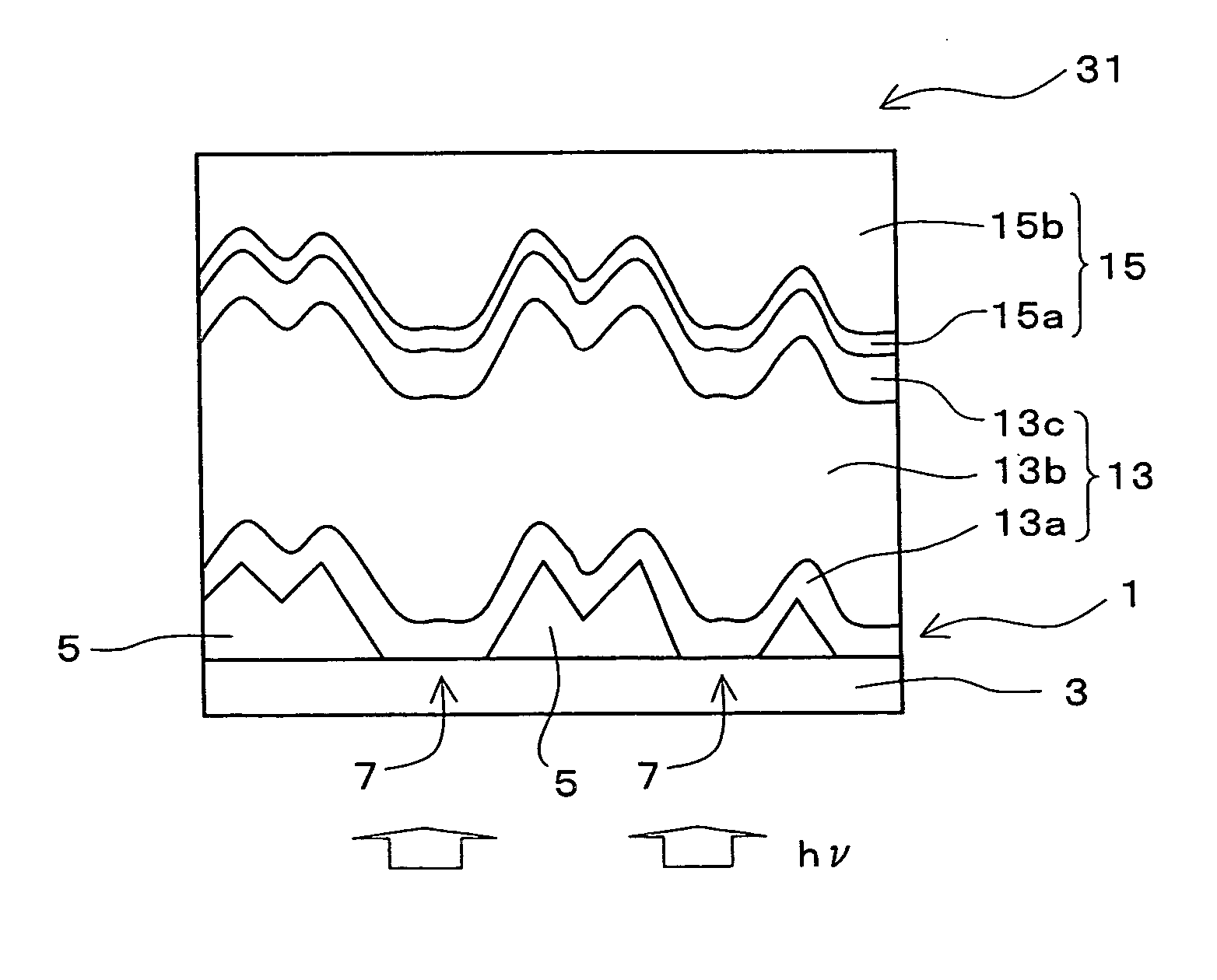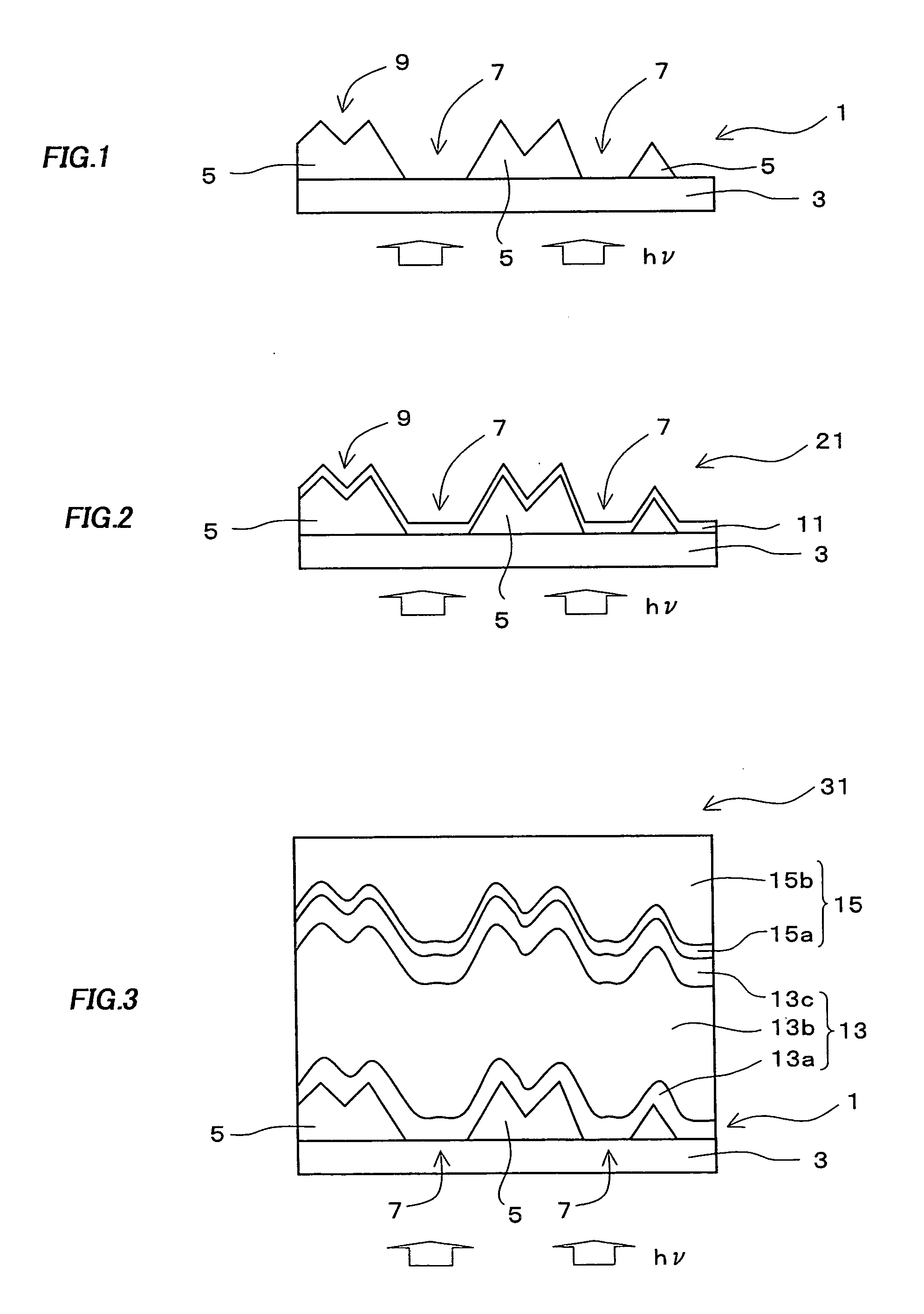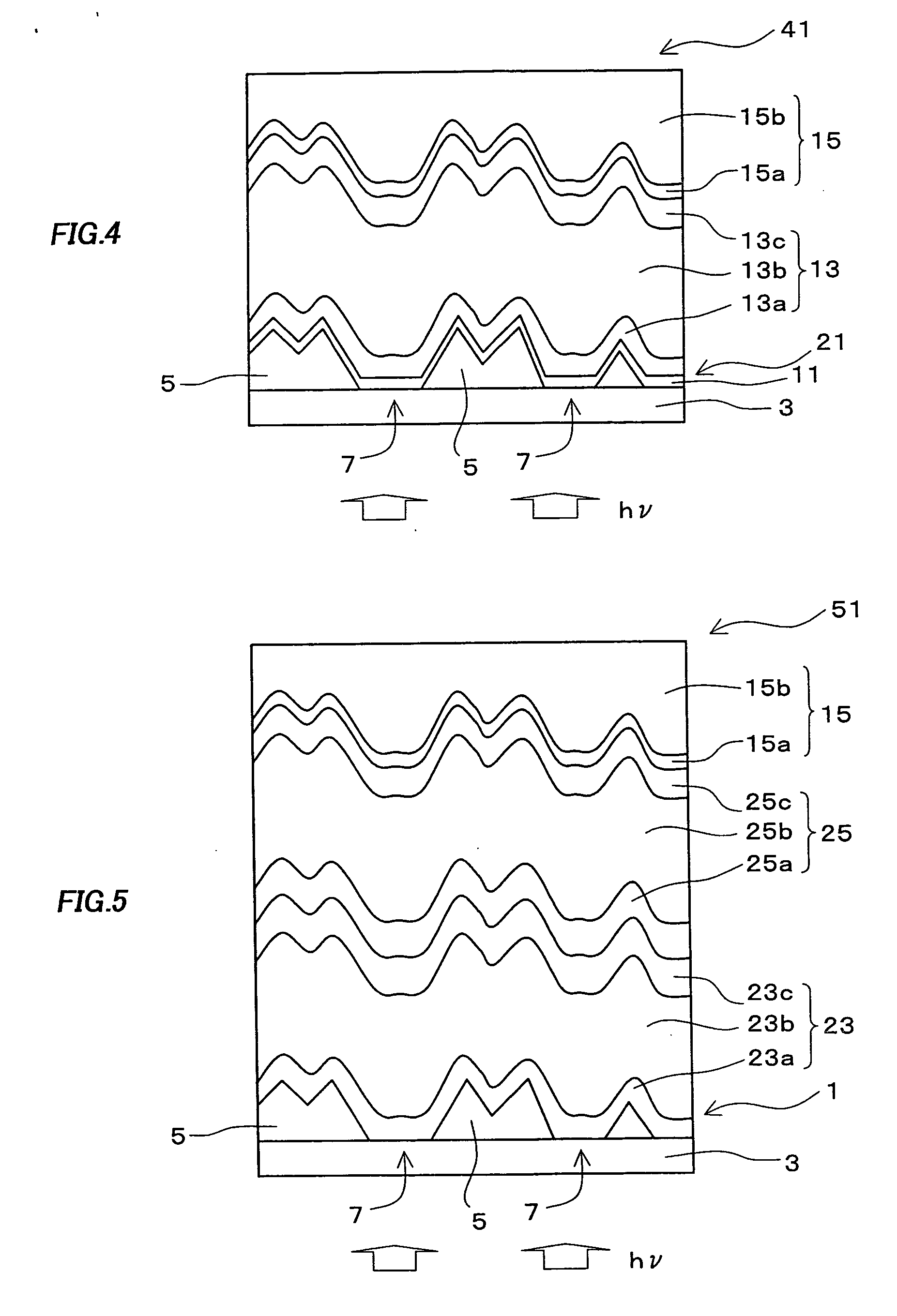Substrate for photoelectric conversion device, photoelectric conversion device, and stacked photoelectric conversion device
a photoelectric conversion and substrate technology, applied in the direction of basic electric elements, electrical apparatus, semiconductor devices, etc., can solve the problems of global warming phenomenon, depletion of future resources, lack of raw materials, etc., and achieve the effect of enhancing the photoelectric conversion efficiency of the photoelectric conversion device, enhancing the transmittance of the first transparent conductive layer, and reducing the cost of raw materials
- Summary
- Abstract
- Description
- Claims
- Application Information
AI Technical Summary
Benefits of technology
Problems solved by technology
Method used
Image
Examples
first embodiment
1. First Embodiment
[0093] A substrate for a photoelectric conversion device of the first embodiment of the first present invention includes a first transparent conductive layer formed on at least a part of the surface region of a substrate and the first transparent conductive layer has at least an opening portion exposing the substrate.
1-1. Substrate
[0094] In a photoelectric conversion device having a structure of a superstrate type, a transparent substrate is employed as the above substrate, but in a photoelectric conversion device having a structure of a substrate type, a non-transparent substrate such as stainless steel or the like may be used as the above substrate. Hereinafter, a substrate for a photoelectric conversion device having a structure of a superstrate type will be described, but these descriptions can also be applied to the case where the photoelectric conversion device has a structure of a substrate type. As a material of the transparent substrate, glass, resin h...
second embodiment
2. Second Embodiment
[0121] In a photoelectric conversion device of the second embodiment of the first present invention, a photoelectric conversion layer and a backside electrode layer are stacked in this order on the substrate for a photoelectric conversion device in the first embodiment. Hereinafter, a photoelectric conversion device having a structure of a superstrate type will be described, but these descriptions can also be applied to the case where the photoelectric conversion device has a structure of a substrate type.
[0122] Since the photoelectric conversion layer is formed on the substrate of the first embodiment, the quantity of light entering the photoelectric conversion layer can be enhanced and the short circuit current density of a photoelectric conversion device can be improved.
2-1. Photoelectric Conversion Layer
[0123] The photoelectric conversion layer is formed on the substrate for a photoelectric conversion device of the first embodiment. Generally, a p-n juncti...
third embodiment
3. Third Embodiment
[0132] In a stacked photoelectric conversion device of the third embodiment of the first present invention, a plurality of photoelectric conversion layers and a backside electrode layer are stacked in this order on the substrate for a photoelectric conversion device in the first embodiment. Hereinafter, a stacked photoelectric conversion device having a structure of a superstrate type will be described, but these descriptions can also be applied to the case where the stacked photoelectric conversion device has a structure of a substrate type.
[0133] Since the stacked photoelectric conversion device of the present embodiment has a plurality of photoelectric conversion layers, it can receive the split light spectrum in each photoelectric conversion layer by splitting a wide light spectrum region and make effective use of light. And, since the open circuit voltage is sum of the electromotive forces in the respective photoelectric conversion layers, the open circuit v...
PUM
 Login to View More
Login to View More Abstract
Description
Claims
Application Information
 Login to View More
Login to View More - R&D
- Intellectual Property
- Life Sciences
- Materials
- Tech Scout
- Unparalleled Data Quality
- Higher Quality Content
- 60% Fewer Hallucinations
Browse by: Latest US Patents, China's latest patents, Technical Efficacy Thesaurus, Application Domain, Technology Topic, Popular Technical Reports.
© 2025 PatSnap. All rights reserved.Legal|Privacy policy|Modern Slavery Act Transparency Statement|Sitemap|About US| Contact US: help@patsnap.com



